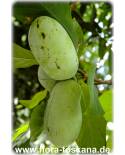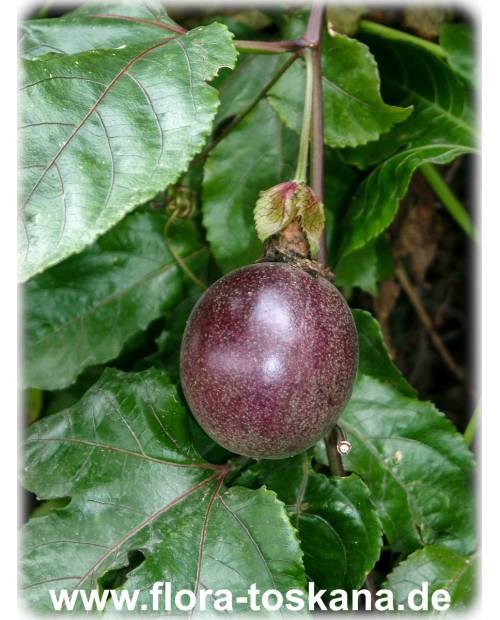Asimina triloba 'Prolific' - Pawpaw, American Custard Apple, West Virginia Banana, Indiana Banana
'Prolific' (Paw Paw, Asimina triloba) does not hesitate long after grafting to set the first flowers and fruits, which are of high quality and very tasty.
General information on Pawpaw
For centuries, the Native Americans of North America have appreciated the approximately 300 g, 10 cm long, green-skinned fruit of the Pawpaw, also called Paupau, or Papau (Asimina triloba), that ripen in fall. It is considered the largest fruit native to North America. The yellowish-white flesh melts in the mouth and is very nutritious. It has a refreshing, exotic taste that cannot be compared to any of the Central European fruit but is similar to Custard Apple (Annona). The crowns, which are leafless in winter, tolerate severe frost to below -20°C. The very slowly growing trees (their growth has nothing in common with bananas!) reach a height of 4 to 6 m when planted out (half the size in a pot) and form oval crowns. Its leaves are about 30 cm long, light green, thin and turn golden yellow in fall. The maroon to purple flowers appear mostly before the new shoots in April/May. Since each flower has several ovaries, a pollinated flower can produce several fruits. However, since their own pollen is not always good for pollination, it is better to plant two genetically different plants of a grafted variety. 'Sunflower', however, is a reliably self-fertile variety. In the early years, Pawpaw trees require a partially shaded site. As they grow older, they will tolerate more sun. Since their leaves evaporate a lot of water, the soil should always be kept slightly moist. Due to their slow growth, there is usually no need for pruning. Native to the East of the USA, Pawpaw trees are very hardy plants and very suitable for containers. Pawpaw trees are real newcomers and so far only produced in small numbers.
Data sheet
- Family
- Annonaceae
- Origin
- North America
- Flowering period
- Spring
- Color of flowers
- Red
- Fruits
- Edible fruits
- Growth
- Tree
- Location
- Everywhere
- winter temperature
- Hardy
- Minimum temperature
- -20 °C
- Hardiness Zones
- 6
- Height
- 4 - 5 m
You might also like
Customers who bought this product also bought:
































